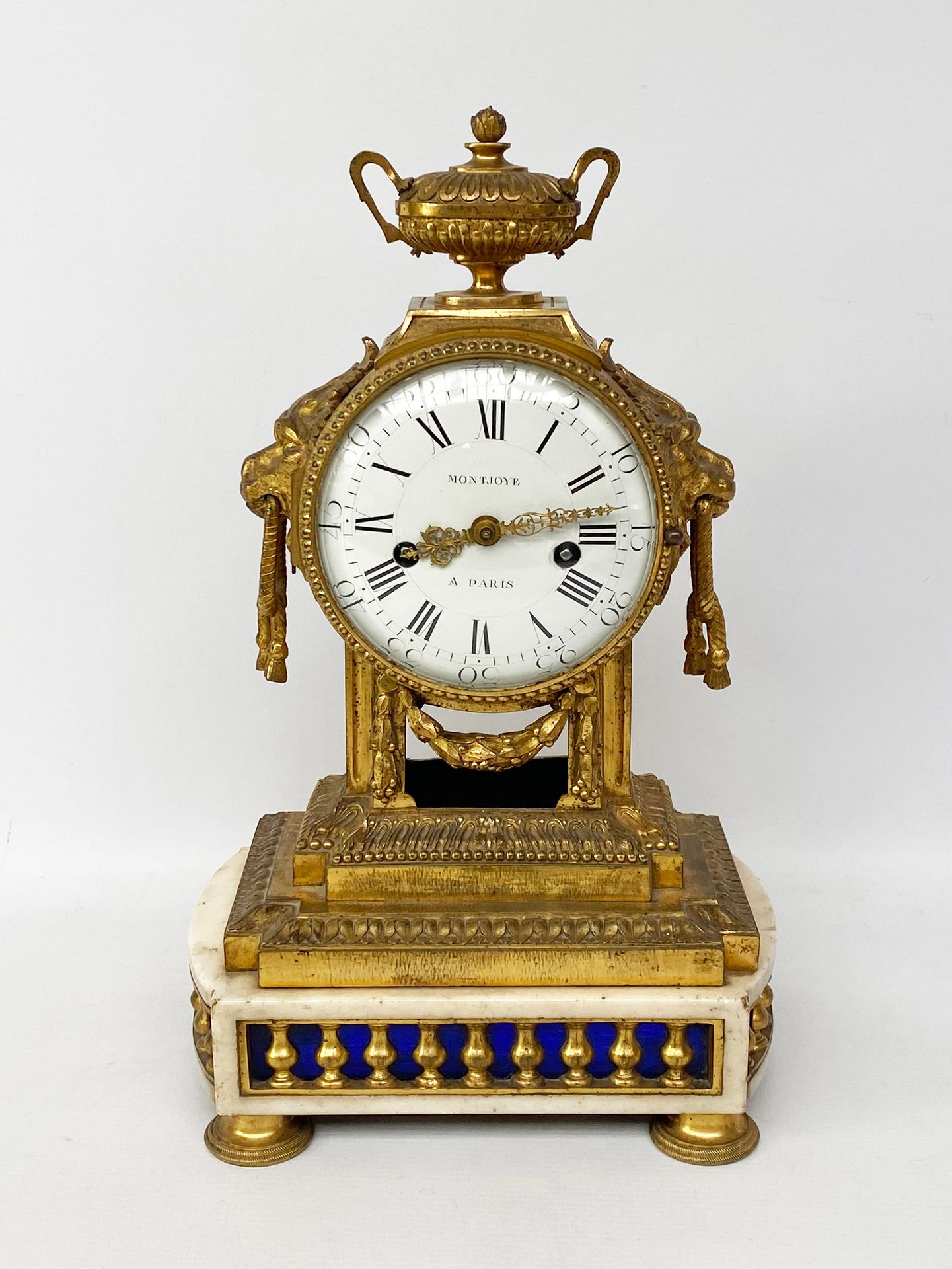Description
Important clock in chased and gilded bronze, XVIIIth century. Decorated with rows of oves and acanthus leaves and rows of pearls. The sides show two lions' heads holding in their mouths a knotted rope. The clock is surmounted by a covered urn with a flame, decorated with gadroons and leafy handles. The Carrara marble base has three rows of balusters on a blue tinted glass background. The white enamelled dial is signed "MontJoye à Paris" with the hours in Roman numerals and the minutes in Arabic numerals. Work of the Louis XVI period. Montjoye in Paris corresponds to Louis MONTJOYE (born in 1725) who is none other than one of the best watchmakers of the second half of the 18th century. He was able to count in his clientele the Duke of Richelieu, the Duchess of Mazarin and Madame Elisabeth, the sister of Louis XVI. A blue tinted glass and a gilded bronze grid are to be reattached to the garland and the back of the clock. The glass on the back is missing, revealing the movement, as well as the pendulum. H. 42 cm L. : 25cm P. 17 cm
82
Important clock in chased and gilded bronze, XVIIIth century. Decorated with rows of oves and acanthus leaves and rows of pearls. The sides show two lions' heads holding in their mouths a knotted rope. The clock is surmounted by a covered urn with a flame, decorated with gadroons and leafy handles. The Carrara marble base has three rows of balusters on a blue tinted glass background. The white enamelled dial is signed "MontJoye à Paris" with the hours in Roman numerals and the minutes in Arabic numerals. Work of the Louis XVI period. Montjoye in Paris corresponds to Louis MONTJOYE (born in 1725) who is none other than one of the best watchmakers of the second half of the 18th century. He was able to count in his clientele the Duke of Richelieu, the Duchess of Mazarin and Madame Elisabeth, the sister of Louis XVI. A blue tinted glass and a gilded bronze grid are to be reattached to the garland and the back of the clock. The glass on the back is missing, revealing the movement, as well as the pendulum. H. 42 cm L. : 25cm P. 17 cm
